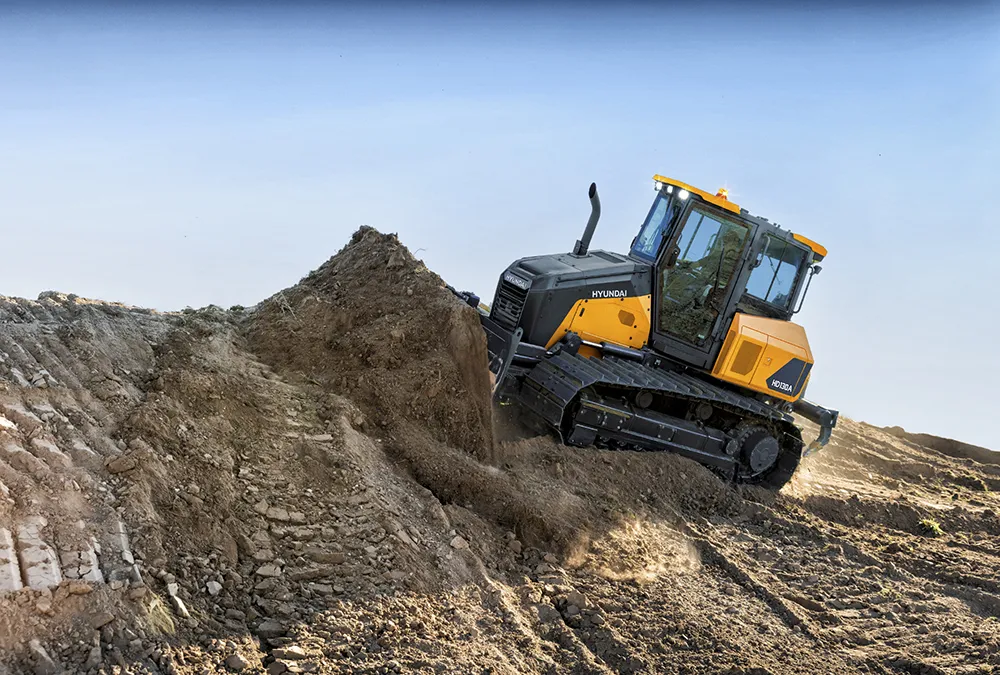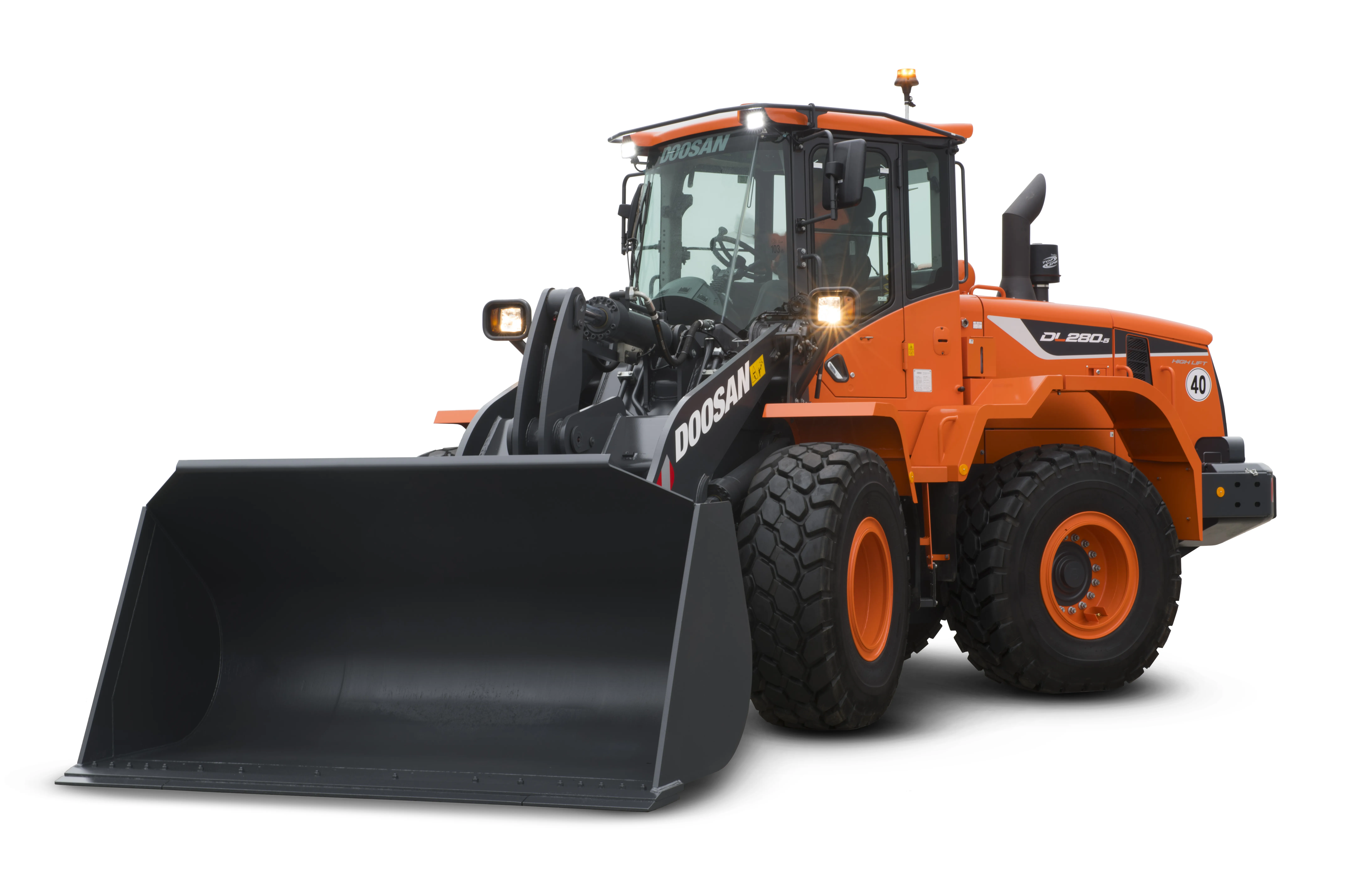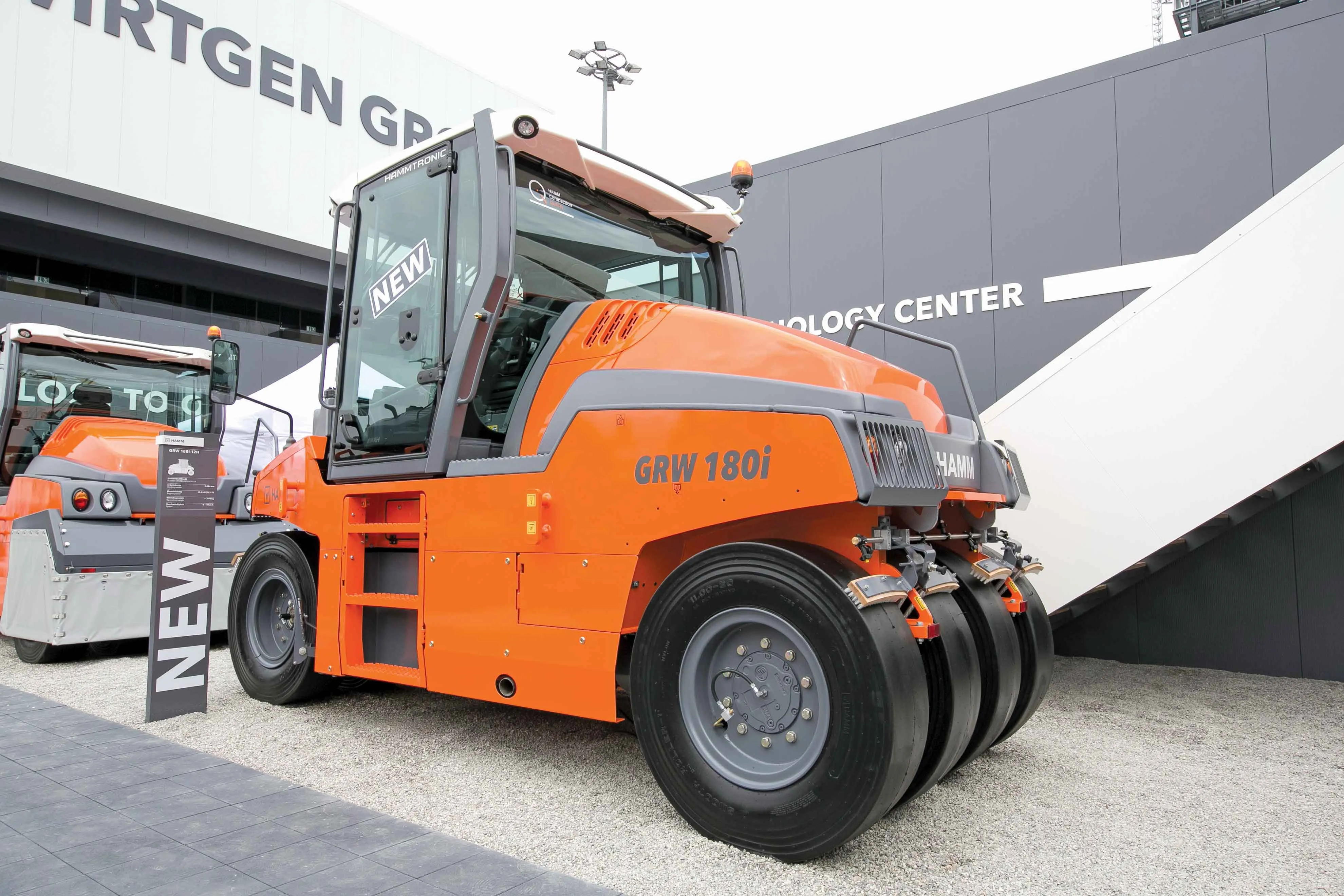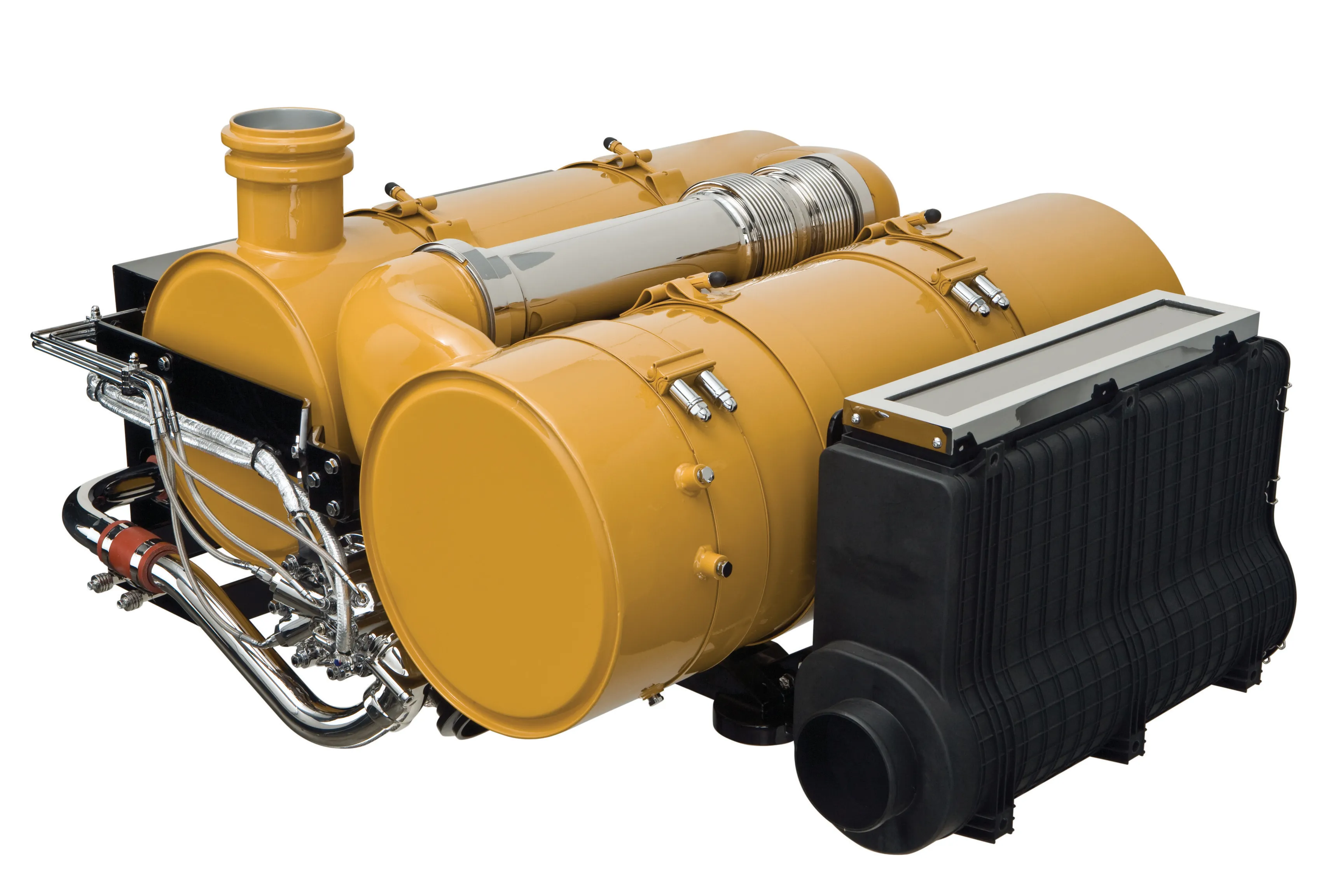Liebherr’s new wheeled loaders are said to combine high performance with high efficiency – Mike Woof writes
Liebherr makes bold claims for its new wheeled loader range, saying that the latest models will offer unparalleled operating efficiency. High performance with fast cycle times are said to be matched with precise control at low speeds as well as low fuel consumption and running costs.
January 15, 2016
Read time: 4 mins
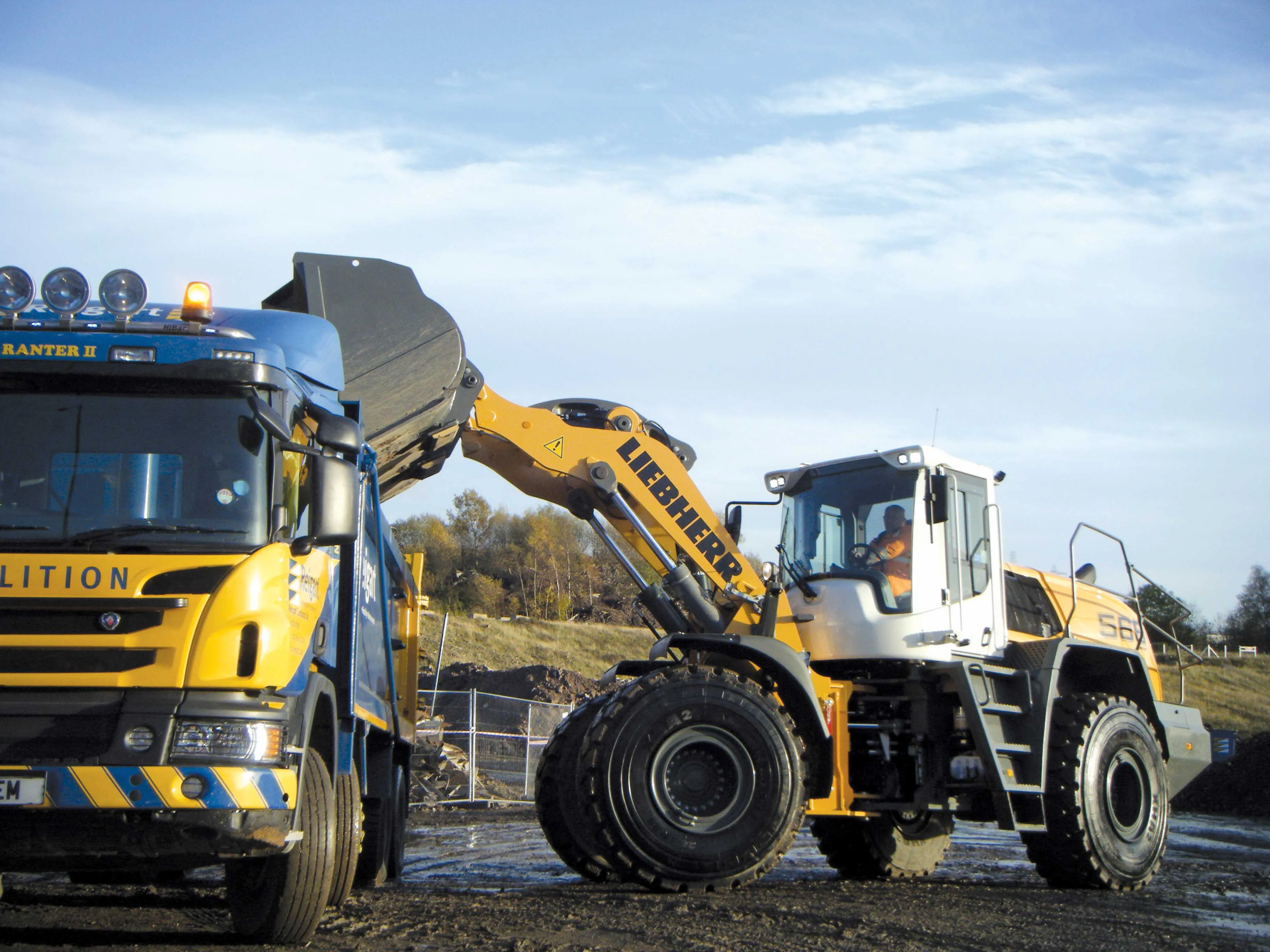
Liebherr’s new wheeled loaders are said to combine high performance with high efficiency – Mike Woof writes
718 Liebherr makes bold claims for its new wheeled loader range, saying that the latest models will offer unparalleled operating efficiency. High performance with fast cycle times are said to be matched with precise control at low speeds as well as low fuel consumption and running costs.
Durable and reliable, the machines are said to be heavily built to cope with tough site conditions. The new L550 and L566 feature axles from the next model up in the former range for example, allowing these machines to last longer in arduous operating conditions.
The most innovative feature of the machines however is the new driveline system, which combines Liebherr’s trademark hydrostatic system with a mechanical drive developed by2304 ZF. According to Liebherr this will make the new loaders more fuel-efficient than any other models available.
Martin Gschwend is managing director at Liebherr’s Bischofshofen plant which produces the firm’s wheeled loaders. He said, “This is a milestone in the technical development of wheeled loaders. It is more than just a new machine. It is a new concept. At the heart of these new machines is the Tier 4 Final engine and the XPower powertrain.”
While the new L550 and L566 are being unveiled now, Liebherr will launch the full range of wheeled loaders featuring the innovative driveline at688 bauma 2016. All will have the same combination of low fuel consumption, precise operation and high output due to the novel drivetrain. The hydrostatic drive works for forward and reverse and at low speeds where precision is required. At full speed for longer load and carry cycles, the machines switch over completely to the constantly variable transmission (CVT) mechanical drive. When operating at speeds in between, the onboard electronics govern precisely how much of the drive is through the hydrostatic and CVT systems. This is monitored and balanced continuously to optimise performance, boosting efficiency. Gschwend said, “Our tests show Liebherr wheeled loaders use up to 30% less fuel than conventional loaders.”
The new drivelines offer other benefits too and Gschwend said, “The new wheeled loaders have almost no brake wear. Tyre life is also increased.”
Other manufacturers such as178 Caterpillar offer CVT transmissions as options on certain models, but Liebherr says it is the first firm to be fitting these as standard right across its wheeled loader range. According to Gschwend, this is a key focus for Liebherr which is keen to retain its status as an innovator in product development, building equipment with high brand quality and strong resale values.
Gschwend added that the new loaders will also be very durable, “Our machines are tested more thoroughly than even before. In light of this, our new loaders proved themselves in tough working conditions in over 65,000 hours of intensive testing.”
The low emission engines are also Liebherr units and have no need of EGR systems. This is said to reduce cooling requirements and also boost operating safety in applications where the heat generated by an EGR system poses a potential risk. Gschwend said, “A key component is the SCR system which was developed in-house.”
Power for the L550 comes from a four-cylinder Liebherr D934 diesel rated at 143kW while the L566 is driven by a four-cylinder Liebherr D944 engine delivering 168kW.
Customers can select either z-bar linkages or parallel (industrial) linkages to suit the application and at no extra cost. A range of bucket options is also available. With the engines mounted behind the back axle, weight distribution is also said to be optimised for loading operations. Other benefits include advanced cooling systems, improved operator comfort and visibility and easy maintenance procedures. A wide array of buckets and loader arms means that operating weight for the L550 ranges from 17.7-20.4tonnes depending on specification, while the L566 can weigh from 18.4-21.3tonnes.
Durable and reliable, the machines are said to be heavily built to cope with tough site conditions. The new L550 and L566 feature axles from the next model up in the former range for example, allowing these machines to last longer in arduous operating conditions.
The most innovative feature of the machines however is the new driveline system, which combines Liebherr’s trademark hydrostatic system with a mechanical drive developed by
Martin Gschwend is managing director at Liebherr’s Bischofshofen plant which produces the firm’s wheeled loaders. He said, “This is a milestone in the technical development of wheeled loaders. It is more than just a new machine. It is a new concept. At the heart of these new machines is the Tier 4 Final engine and the XPower powertrain.”
While the new L550 and L566 are being unveiled now, Liebherr will launch the full range of wheeled loaders featuring the innovative driveline at
The new drivelines offer other benefits too and Gschwend said, “The new wheeled loaders have almost no brake wear. Tyre life is also increased.”
Other manufacturers such as
Gschwend added that the new loaders will also be very durable, “Our machines are tested more thoroughly than even before. In light of this, our new loaders proved themselves in tough working conditions in over 65,000 hours of intensive testing.”
The low emission engines are also Liebherr units and have no need of EGR systems. This is said to reduce cooling requirements and also boost operating safety in applications where the heat generated by an EGR system poses a potential risk. Gschwend said, “A key component is the SCR system which was developed in-house.”
Power for the L550 comes from a four-cylinder Liebherr D934 diesel rated at 143kW while the L566 is driven by a four-cylinder Liebherr D944 engine delivering 168kW.
Customers can select either z-bar linkages or parallel (industrial) linkages to suit the application and at no extra cost. A range of bucket options is also available. With the engines mounted behind the back axle, weight distribution is also said to be optimised for loading operations. Other benefits include advanced cooling systems, improved operator comfort and visibility and easy maintenance procedures. A wide array of buckets and loader arms means that operating weight for the L550 ranges from 17.7-20.4tonnes depending on specification, while the L566 can weigh from 18.4-21.3tonnes.


